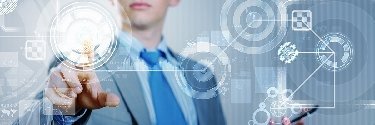Network security
With the growth of malware and data breaches, enterprises must ensure their networks -- and the applications and traffic on those networks -- are secure. Learn about important network security strategies and technologies, such as VPNs, Secure Access Service Edge (SASE), zero trust and software-defined perimeter (SDP).
Top Stories
-
Tip
04 Apr 2025

IPsec vs. SSL VPNs: What are the differences?
New technologies get all the headlines, but VPNs aren't going away anytime soon. Speed and security are among the factors to consider when determining what type of VPN to use. Continue Reading
By- John Burke, Nemertes Research
-
Opinion
03 Apr 2025

Palo Alto Networks pushes platformization, AI for security
At Ignite in New York, the vendor laid out plans to use AI and platformization to consolidate cybersecurity tools and data to combat increasingly sophisticated attacks. Continue Reading
By- John Grady, Principal Analyst
-
Enterprise Strategy Group
We provide market insights, research and advisory, and technical validations for tech buyers.
-
News
30 Nov 2017

Aporeto app security uncoupled from network infrastructure
Aporeto app security startup has introduced security software that achieves scale by decoupling application security from the network infrastructure of a hybrid cloud environment. Continue Reading
By- Antone Gonsalves, Editor at Large
-
Tip
08 Nov 2017

Need help making Wi-Fi secure? Consider some 'classic' approaches
Keeping your Wi-Fi secure is a challenge, to say the least. Security hasn't kept up with Wi-Fi advances, but there are steps you can take to keep your Wi-Fi network protected. Continue Reading
By -
News
03 Nov 2017

What endpoint security systems do companies need?
This week, bloggers look into advances in endpoint security systems, achieving greater functionality with AirCheck G2 and the continued role of the command-line interface in an API era. Continue Reading
By- Eamon McCarthy Earls, Former Associate Site Editor, TechTarget
-
News
13 Oct 2017

Cybersecurity evolution brings shifts for network security
Bloggers explore cybersecurity evolution and its impact on network security, new network fabrics from Extreme and take a deep dive on routing protocols, such as BFD. Continue Reading
By- Eamon McCarthy Earls, Former Associate Site Editor, TechTarget
-
News
20 Sep 2017

Aruba launches 360 Secure Fabric user behavioral analytics system
Artificial intelligence and machine learning are key components of the newly launched Aruba 360 Secure Fabric user behavioral analytics security software. Continue Reading
By- Eamon McCarthy Earls, Former Associate Site Editor, TechTarget
-
News
07 Sep 2017

VMware network security improves with AppDefense launch
Bloggers examine AppDefense -- a new VMware network security offering -- and look into synchronizing BGP and OSPF, as well as the capabilities of new Savvius analytics. Continue Reading
By- Eamon McCarthy Earls, Former Associate Site Editor, TechTarget
-
News
30 Aug 2017

VeloCloud's SD-WAN security program adds more partners
VeloCloud introduced new members to its SD-WAN security program, while Canonical Ltd. and SnapRoute combine technologies to develop an integrated white box switching stack. Continue Reading
By- Jennifer English, Editorial Director
-
Feature
25 Aug 2017

Learn what network access control systems can do for you
Network access control systems keep rogue or compromised devices off of corporate networks. See how they work and the other security technologies with which they work. Continue Reading
By -
News
18 Aug 2017

WatchGuard launches new firewall appliances, 5G focus of MWC
Bloggers examine WatchGuard firewall appliances, explore transparency as a vendor virtue and assess the role of 5G in future SD-WAN deployments. Continue Reading
By- Eamon McCarthy Earls, Former Associate Site Editor, TechTarget
-
News
28 Jul 2017

2017 cybersecurity trends at the Black Hat conference
This week, bloggers look into 2017 cybersecurity trends leading up to the Black Hat conference, Movidius deep learning and Mist's approach to WLAN. Continue Reading
By- Eamon McCarthy Earls, Former Associate Site Editor, TechTarget
-
News
27 Jun 2017

Cisco and Apple alliance deepens, targets security and Wi-Fi projects
With Cisco's Ericsson partnership on hold for now, the Cisco and Apple CEOs hinted at joint work on Wi-Fi and security at Cisco annual customer conference. Continue Reading
By- Antone Gonsalves, Editor at Large
-
Answer
08 Jun 2017

How to cut false security, malware alerts in hybrid cloud
The bad news: IT teams are deluged by false security and malware alerts with their hybrid clouds. The good news: New tools are here to help. Continue Reading
By- Amy Larsen DeCarlo, GlobalData
-
News
11 Apr 2017

VeloCloud introduces SD-WAN security partnership program
VeloCloud introduced a partner program that lets security vendor partners develop integrated SD-WAN security services. Current partners include Fortinet, IBM Security and Check Point. Continue Reading
By- Jennifer English, Editorial Director
-
News
28 Mar 2017

Session stickiness in the race for load-balancer performance
This week, bloggers look into load-balancer performance, congressional changes to ISP rules and software-defined perimeters. Continue Reading
By- Eamon McCarthy Earls, Former Associate Site Editor, TechTarget
-
News
15 Mar 2017

Assessing the Google Cloud security strategy
This week, bloggers assess the Google Cloud security strategy, Cisco's lessons from OpenStack and Arista's new containerized network operating system. Continue Reading
By- Eamon McCarthy Earls, Former Associate Site Editor, TechTarget
-
News
09 Mar 2017

New York cybersecurity regulations could have big impact nationwide
This week, bloggers assess the effect of New York cybersecurity regulations, whether the network edge will grow in importance and how customers create complexity. Continue Reading
By- Eamon McCarthy Earls, Former Associate Site Editor, TechTarget
-
Tip
09 Feb 2017

Cloud security tips to consider when mulling external data centers
The old security rules don't apply when moving workloads to the cloud. These cloud security tips will help you make the right decision. Continue Reading
By- Michael Gregg, Superior Solutions, Inc.
-
News
05 Jan 2017

Looking at cybersecurity initiatives in 2016 and 2017
This week, bloggers explore cybersecurity initiatives, Google Compute Engine and new Versa SD-WAN options. Continue Reading
By- Eamon McCarthy Earls, Former Associate Site Editor, TechTarget
-
News
11 Nov 2016

President-elect silent on federal cybersecurity policies
This week, bloggers look ahead to the new administration's cybersecurity policies, how to close gaps in app delivery management and the best way to optimize data centers. Continue Reading
By- Eamon McCarthy Earls, Former Associate Site Editor, TechTarget
-
News
26 Oct 2016

Why one Gartner analyst is 'not sorry' about DDoS attack program
This week, bloggers look into the DDoS attack program that leveraged IoT devices, Webscale's cloud-resource-allocation platform and alternative views of digital transformation. Continue Reading
By- Eamon McCarthy Earls, Former Associate Site Editor, TechTarget
-
News
24 Aug 2016

IT professionals aim to operationalize threat intel in the enterprise
This week, networking bloggers look into operationalizing threat intel, Google Fiber's deployment and home lab spending. Continue Reading
By- Eamon McCarthy Earls, Former Associate Site Editor, TechTarget
-
News
11 Jul 2016

Cisco lifts branch security with latest software release
Cisco introduced at its Live conference branch security software for the ISR router. The networking company also improved malware protection in the Meraki MX appliance. Continue Reading
By- Antone Gonsalves, Editor at Large
-
News
30 Jun 2016

CloudLock to make Cisco security portfolio better at cloud security
Cisco spends $293 million on technology that secures mobile users' access to the cloud. It's the latest addition to the Cisco security portfolio. Continue Reading
By- Antone Gonsalves, Editor at Large
-
News
29 Jun 2016

Using microsegmentation to create a secure communication channel
This week, bloggers look at a startup using microsegmentation to create a secure communication channel, FireEye and customized managed network services. Continue Reading
By- Eamon McCarthy Earls, Former Associate Site Editor, TechTarget
-
News
02 Jun 2016

SS8 takes new approach to cyberthreat intelligence
SS8 launches BreachDetect, a Layer 7 'time machine' for breach detection in enterprises and a new addition to the cyberthreat intelligence marketplace. Continue Reading
By- Eamon McCarthy Earls, Former Associate Site Editor, TechTarget
-
News
26 Apr 2016

Juniper provides container firewall to banks, cloud
Juniper Networks has added a container firewall to its SRX portfolio. The latest product provides container protection for banks, carriers and cloud providers. Continue Reading
By- Antone Gonsalves, Editor at Large
-
News
29 Feb 2016

Versa Networks updates software-defined security offerings
Versa Networks says new security features will help providers create safer branch networks; SDN could make medical devices more secure; and Aryaka claimed two SDN-related patents. Continue Reading
By- Alissa Irei, Senior Site Editor
-
News
14 Jan 2016

Patch offered for breach in Juniper firewalls
This week, a patch becomes available for Juniper firewalls, analysts parse IT employment statistics for 2015 and Aruba deploys 802.11ac for the U.S. Army. Continue Reading
By- Eamon McCarthy Earls, Former Associate Site Editor, TechTarget
-
Buyer's Guide
15 Dec 2015

Network security basics: A Buyer's Guide
Getting network security basics right is critical. This SearchNetworking Buyer's Guide helps you purchase the best products for your enterprise. Continue Reading
-
Feature
16 Nov 2015

Blue Coat ProxySG: Secure Web gateway overview
With features like authentication and Web filtering, the Blue Coat ProxySG secure Web gateway can be deployed as a physical appliance, a virtual machine or a cloud-based service. Continue Reading
By- Andrew Froehlich, West Gate Networks
-
Feature
09 Nov 2015

Palo Alto WildFire: Malware sandbox product overview
Tightly integrated with existing Palo Alto next-generation firewalls, the Palo Alto WildFire cloud-based malware sandbox service supports both public and private cloud deployments. Continue Reading
By- Andrew Froehlich, West Gate Networks
-
Answer
06 Oct 2015

How can enterprises manage the cybersecurity skills gap?
Due to the demand for professionals with backgrounds in both computer science and networking, filling cybersecurity jobs is difficult. Technology will have to play a bigger role. Continue Reading
By- Julian Weinberger, NCP engineering
-
News
09 Sep 2015

Security in SDN effort puts Fortinet in limelight
Fortinet introduces a framework for security in SDN, as startups attract market spotlight. Continue Reading
By- Antone Gonsalves, Editor at Large
-
Tip
21 Aug 2015

OPM hack two months later: What was learned?
Network security expert Michele Chubirka shares her thoughts about June's OPM hack and what steps IT should take to fend off future attacks. Continue Reading
-
Feature
04 Aug 2015

Facing network breach threats, visibility is key
In this Q&A, an IT pro at Penn Mutual shares how his dual strategy of user education and Layer 7 visibility helps prevent network breaches. Continue Reading
-
Tip
10 Jul 2014

How to buy: Assessing next-gen firewalls
Is there a next-gen firewall in your future? Our How to Buy guide offers advice you need to ensure you purchase the best platform to meet your needs. Continue Reading
By- Dave Shackleford, Voodoo Security
-
News
23 Sep 2010

Next-generation firewalls not ready to replace all legacy firewalls
Application-aware firewalls enhance network security by offering deeper visibility, but enterprises will hang on to old-style firewalls. Continue Reading
By- Shamus McGillicuddy, Enterprise Management Associates
-
News
16 Sep 2010

Networking vendors aim to improve server virtualization security
Server virtualization security is no longer guaranteed by creating physical security zones for different classes of virtual machines on host servers. Networking and network security vendors are introducing virtual security products that apply security controls and policies directly to virtual machines within virtual hosts. Continue Reading
By- Shamus McGillicuddy, Enterprise Management Associates
-
Answer
25 Nov 2006

Intrusion detection vs. intrusion prevention
Our expert, Puneet Mehta, tells us what the key difference is between intrusion detection and intrusion prevention, in this expert response. Continue Reading
By- Puneet Mehta, SDG
-
Feature
16 Nov 2006

"Network Security: The Complete Reference," Chapter 10: Network device security
Chapter 10 focuses on using routers and switches to increase the security of the network as well as providing appropriate configuration steps for protecting the devices themselves against attacks. Continue Reading
-
Tip
19 Oct 2006

How SSL and TLS secure network transactions
SSL and TLS are protocols that were developed primarily to protect Web transactions, but they can be used to protect any type of network traffic that utilizes TCP at the transport layer, including the popular SSL VPN. In this tip, learn how SSL and TLS were developed and how they work. Continue Reading
By- David Jacobs, The Jacobs Group
-
Tip
03 Aug 2006

VPNs for disaster recovery: IPsec vs. SSL
Using a VPN as a failover mechanism when a primary communications link may be unavailable due to a disaster can be a smart move -- as well as an easy one to implement. In this tip, learn about the pros and cons of IPsec and SSL VPN options for disaster recovery. Continue Reading
By- Justin Korelc and Ed Tittel
-
Tip
22 Jun 2006

How to move an SSL certificate between Exchange servers
SearchExchange.com contributor Serdar Yegulalp provides step-by-step instructions on how to move an SSL certificate from one Exchange server to another, and explains a couple of gotchas to watch out for during the process. Continue Reading
-
Tip
07 Jun 2006

Five steps to stamp out unsafe Wi-Fi use
Lisa Phifer helps dispel the top myths of wireless security and explains five steps that network administrators can take to lead their users toward safer Wi-Fi usage. Continue Reading
By- Lisa Phifer, Core Competence
-
Feature
10 Apr 2006

To block or not to block: Rogue containment methods
Wireless network monitoring systems are quickly moving from detection alone to detection and prevention. In particular, many now provide options to "block" rogue devices, preventing wireless or wired network access. This tip explores how these containment features work, their potential side-effects, and what network administrators should consider before activating them. Continue Reading
-
Feature
10 Apr 2006

Fighting wireless DoS attacks
Despite recent 802.11 security advances, WLANs remain very vulnerable to Denial of Service attacks. While you may not be able to prevent DoS attacks, a WIDS can help you detect when DoS attacks occur and where they come from, so that you can track the intruder down and bring him to justice -- or at least scare him away. This tip offers practical advice on how to recognize and respond to DoS attacks launched against your WLAN. Continue Reading
By- Lisa Phifer, Core Competence
-
Tip
02 Jan 2006

OSI: Securing the Stack, Layer 5 -- session hijacking
To help secure your systems against session hijacking, this tip walks you through the steps hackers use to hijack active sessions and take over your network. You'll also learn how to detect and prevent session hijacking attacks, a major security concern at the session layer -- Layer 5 of the OSI model. Continue Reading
By- Michael Gregg, Superior Solutions, Inc.
-
Tip
31 Oct 2005

Cache poisoning attacks and how to prevent them
Want something scary to think about? A compromise of your name servers could cut you off from the Internet or redirect your customers to a competitor. It could even shunt sensitive electronic mail through an intermediate mail server or reroute your users to an exact replica of a popular Web site, where their keystrokes, including account names and passwords, are captured. In this tip, Cricket Liu provides a checklist of measures you can take to secure your DNS infrastructure. Continue Reading
By- Cricket Liu, Infoblox
-
Tip
20 Oct 2005

VPN security: Where are the vulnerabilities?
SOX compliance mandates have pushed organizations to deliver end-to-end VPN security. This means that the VPN itself is no longer enough. Robbie Harrell explains how organizations can apply security policies to the VPN in this tip. Continue Reading
By- Robbie Harrell
-
Tip
11 Oct 2005

Understanding the differences between IDS and IPS
We all know that the Internet is a haven for cyber criminals who use the connectivity to launch an unprecedented number of attacks against enterprise networks. IDS and IPS have been developed to combat these threats, but they are not one in the same. Learn the differences between IDS and IPS, and which is right for your network, with this expert tip. Continue Reading
By -
Feature
18 May 2005

Commonly overlooked security hazards
Security expert Dave Piscitello covers the ten most commonly overlooked security hazards and easy ways to prevent them from placing your network at risk. Continue Reading
-
Feature
14 Feb 2005

Most popular viruses and hacking tools
Here are 2004's most popular hacker tools, viruses, remote tools, adware, spyware, Trojans and worms. Continue Reading
- Answer 09 Nov 2004
- Answer 12 Oct 2004
- Answer 12 May 2004
-
Tip
27 Apr 2004

Layer 3 MPLS VPNs
A look at some of the details of Layer 3 MPLS VPNs. Continue Reading
By- Robbie Harrell
-
Tip
02 Mar 2004

WLAN security: Beyond the VPN
Wired networks have used virtual private networks (VPNs) to secure transactions across this edge, but this approach has its limitations. Continue Reading
By- Atif Azim, Vice President of Solutions, Perfigo, Inc.
- Answer 08 Sep 2003
-
Feature
24 Feb 2003

Network Security Principles and Practices: Secure LAN switching
This book excerpt offers steps you can take to make Layer 2 environments and switches more secure, including permit lists, protocol filtering and VLANs. Continue Reading